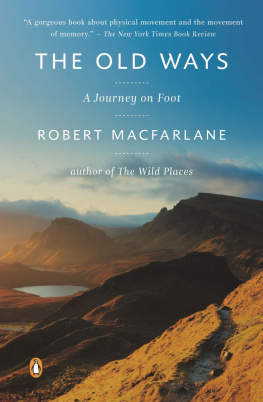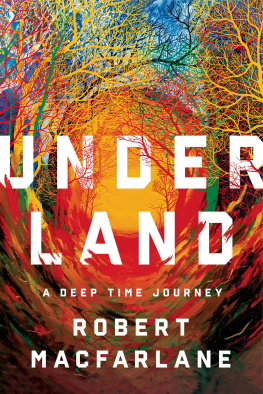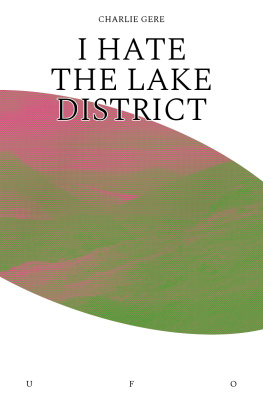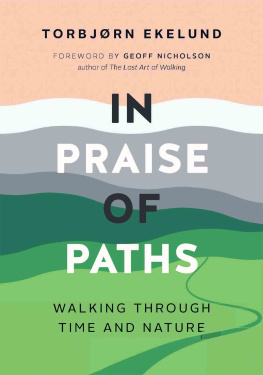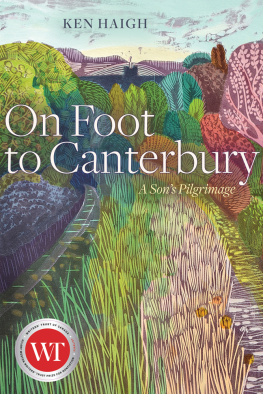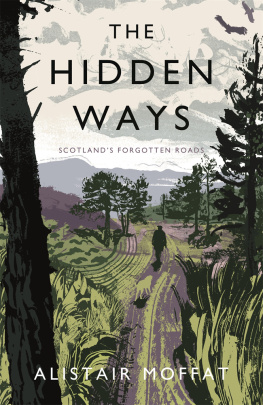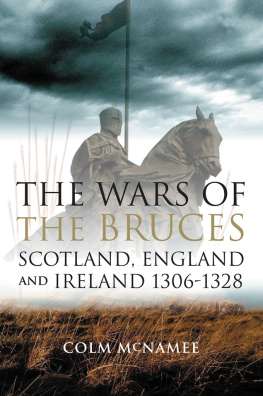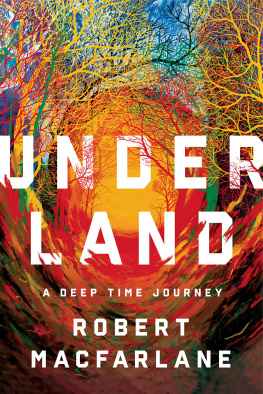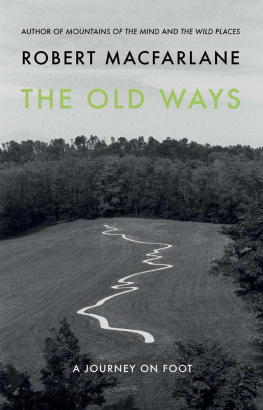By the same author
Mountains of the Mind: Adventures in Reaching the Summit
The Wild Places
PENGUIN BOOKS
An imprint of Penguin Random House LLC
375 Hudson Street
New York, New York 10014
penguin.com
First published in Great Britain by Hamish Hamilton, an imprint of Penguin Books Ltd 2012
First published in the United States of America by Viking Penguin, a member of Penguin Books (USA) Inc., 2012
Published in Penguin Books (UK) 2013
Published in Penguin Books (USA) 2013
Copyright 2012 by Robert Macfarlane
Penguin supports copyright. Copyright fuels creativity, encourages diverse voices, promotes free speech, and creates a vibrant culture. Thank you for buying an authorized edition of this book and for complying with copyright laws by not reproducing, scanning, or distributing any part of it in any form without permission. You are supporting writers and allowing Penguin to continue to publish books for every reader.
Acknowledgments for permission to use the copyrighted works appear on pages 410411.
eBook ISBN: 978-1-101-60107-5
THE LIBRARY OF CONGRESS HAS CATAL OGED THE HARDCOVER E DITION AS FOLLOWS:
Macfarlane, Robert, 1976
The old ways : a journey on foot / Robert Macfarlane.
p. cm.
Includes bibliographical references and index.
ISBN 978-0-670-02511-4 (hc.)
ISBN 978-0-14-750979-6 (pbk.)
1. EnglandDescription and travel. 2. ScotlandDescription and travel. 3. Voyages and travels. 4. Macfarlane, Robert, 1976 TravelEngland. 5. Macfarlane, Robert, 1976 TravelScotland. 6. Macfarlane, Robert, 1976 Travel. 7. Trails. 8. Walking. 9. Natural history. 10. Landscapes. I. Title.
DA632.M325 2012
914.2dc23
2012005887
Cover design: Jim Tierney
Cover photograph: David Clapp / Getty Images
Version_2
For Julia, Lily and Tom,
and those who keep the paths open
Much has been written of travel, far less of the road.
Edward Thomas, The Icknield Way (1913)
My eyes were in my feet
Nan Shepherd, The Living Mountain (1977)
AUTHORS NOTE
This book could not have been written by sitting still. The relationship between paths, walking and the imagination is its subject, and much of its thinking was therefore done was only possible while on foot. Although it is the third book in a loose trilogy about landscape and the human heart, it need not be read after or in the company of its predecessors. It tells the story of walking a thousand miles or more along old ways in search of a route to the past, only to find myself delivered again and again to the contemporary. It is an exploration of the ghosts and voices that haunt ancient paths, of the tales that tracks keep and tell, of pilgrimage and trespass, of songlines and their singers and of the strange continents that exist within countries. Above all, this is a book about people and place: about walking as a reconnoitre inwards, and the subtle ways in which we are shaped by the landscapes through which we move.
PART I
TRACKING
(England)
1
TRACK


All things are engaged in writing their historyNot a foot steps into the snow, or along the ground, but prints in characters more or less lasting, a map of its march. The ground is all memoranda and signatures; and every object covered over with hints. In nature, this self-registration is incessant, and the narrative is the print of the seal.
Ralph Waldo Emerson (1850)
Two days short of the winter solstice; the turn of the years tide. All that cold day, the city and the countryside around felt halted, paused. Five degrees below freezing and the earth battened down. Clouds held snow that would not fall. Out in the suburbs the schools were closed, people homebound, the pavements rinky and the roads black-iced. The sun ran a shallow arc across the sky. Then just before dusk the snow came dropping straight for five hours and settling at a steady inch an hour.
I was at my desk that evening, trying to work but distracted by the weather. I kept stopping, standing, looking out of the window. The snow was sinking through the orange cone cast by a street light, the fat flakes showing like furnace sparks.
Around eight oclock the snow ceased. An hour later I went for awalk with a flask of whisky to keep me warm. I walked for half a mile along dark back roads where the snow lay clean and unmarked. The houses began to thin out. A few undrawn curtains: family evenings underway, the flicker and burble of television sets. The cold like a wire in the nose. A slew of stars, the moon flooding everything with silver.
At the southerly fringe of the suburb, a last lamp post stands by a hawthorn hedge, and next to it is a hole in the hedge which leads down to a modest field path.
I followed the field path east-south-east towards a long chalk hilltop, visible as a whaleback in the darkness. Northwards was the glow of the city, and the red blip of aircraft warning lights from towers and cranes. Dry snow squeaked underfoot. A fox crossed the field to my west at a trot. The moonlight was so bright that everything cast a crisp moon-shadow: black on white, stark as woodcut. Wands of dogwood made zebra-hide of the path; hawthorn threw a lattice. The trees were frilled with snow, which lay to the depth of an inch or more on branches and twigs. The snow caused everything to exceed itself and the moonlight caused everything to double itself.
This is the path Ive probably walked more often than any other in my life. Its a young way; maybe fifty years old, no more. Its easterly hedge is mostly hawthorn and around eight feet high; its westerly hedge is a younger mix of blackthorn, hawthorn, hazel and dogwood. It is not normally a beautiful place, but theres a feeling of secrecy to it that I appreciate, hedged in as it is on both sides, and running discreetly as it does between field and road. In summer Ive seen small rolling clouds of goldfinches rising from teasel-heads and then curling ahead to settle again, retreating in the measure that I approach them.
That evening the path was a grey snow alley, and I followed it up to the hanger of beech trees that tops the whaleback hill, passing off the clay and onto the chalk proper. At the back brink of the beech wood I ducked through an ivy-trailed gap, and was into the forty-acre field that lies beyond.
At first sight the field seemed flawless; floe country. Then I set out across it and started to see the signs. The snow was densely printed with the tracks of birds and animals archives of the hundreds of journeys made since the snow had stopped. There were neat deer slots, partridge prints like arrowheads pointing the way, and the pads of rabbits. Lines of tracks curved away from me across the field, disappearing into shadow or hedge. The moonlight, falling at a slant, deepened the dark in the nearer tracks so that they appeared full as inkwells. To all these marks I added my own.
The snow was overwhelmingly legible. Each print-trail seemed like a plot that could be read backwards in time; a series of allusions to events since ended. I found a line of fox pugs, which here and there had been swept across by the foxs brush, as if it had been trying to erase evidence of its own passage. I discovered what I supposed were the traces of a pheasant taking off: trenched footprints where it had pushed up, then spaced feather-presses either side of the tracks, becoming progressively lighter and then vanishing altogether.

